In a short span of time, Arturia has built up their stable of effects into an imposing all-in-one package – now with seven new tools and a bunch of updates. It’s a bit like someone took a list of gear from a high-rent studio and crammed it on your computer.
Actually, let’s pause for a moment and consider what an amazing time it is for in-the-box, native sound. I can hear it even in the work of up-and-coming new producers. And why shouldn’t music be based on our weird own ideas rather than whether we could afford access to some expensive gear?
So Arturia’s FX Collection 2, which grew as handfuls of a la carte emulations and the “xxx you’ll actually use” series, now nearly rivals their V Collection of synths for depth of catalog. You’ll need to love big, skeuomorphic user interfaces – these are designed generally to look like the gear they’re emulating, or fanciful devices otherwise. But they now cover a nice range of tools, ideal for balancing out a collection.
New in this version:
7 new effects. Up to 22 from 15 offerings. New in this one: Bus FORCE, Comp DIODE-609, and EQ SITRAL-295 are totally new. Plus Phaser BI-TRON, Chorus JUN-6, Flanger BL-20, and Chorus DIMENSION-D all get added to the full bundle (previously introduced separately).
TAPE-201 gets a new preamp. The Space Echo recreation gets a critical feature – now there’s the option of the Germanium preamp for some unique crunch, in addition to a clean input or a model of the RE-201.
So, dirty little secret – it was already worth using the TAPE-201 for color, and not only as a delay; now, doubly so.
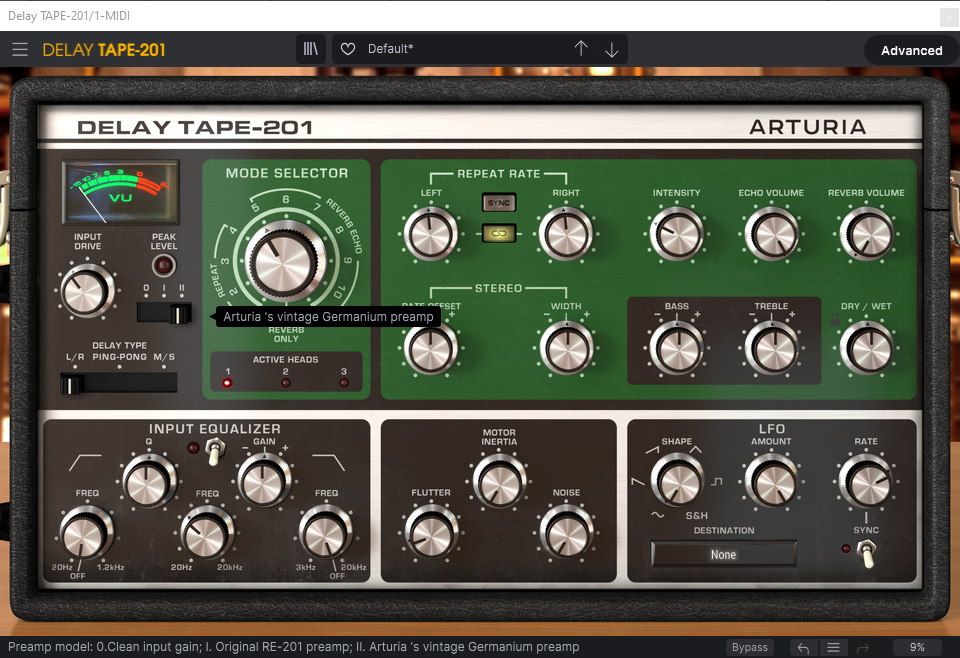
Walkthrough tutorials. These are actually pretty nice – now when you load an effect, you get an option to step through features one at a time with some tips and tutorials. It’s handy, actually, because there are some non-obvious extras in a lot of these tools (sometimes tucked behind an “advanced” button). As usual, Arturia gets the emulation right but then adds some creative extras.
A better preset browser. This was a long time coming; Arturia now has adopted the improved preset browser / filter / savint from their V Collection. It’s good enough that I finally started saving presets. Ahem.
NKS compatibility. I haven’t gotten to work with this yet, but now each effect supports Native Instruments’ NKS format, so if you’ve got a Maschine or keyboard around, you can get more hands-on with the controls. I’ll try that soon.
More presets. 200 new preset additions. There’s some nice stuff in there for experimentation.
Bus FORCE
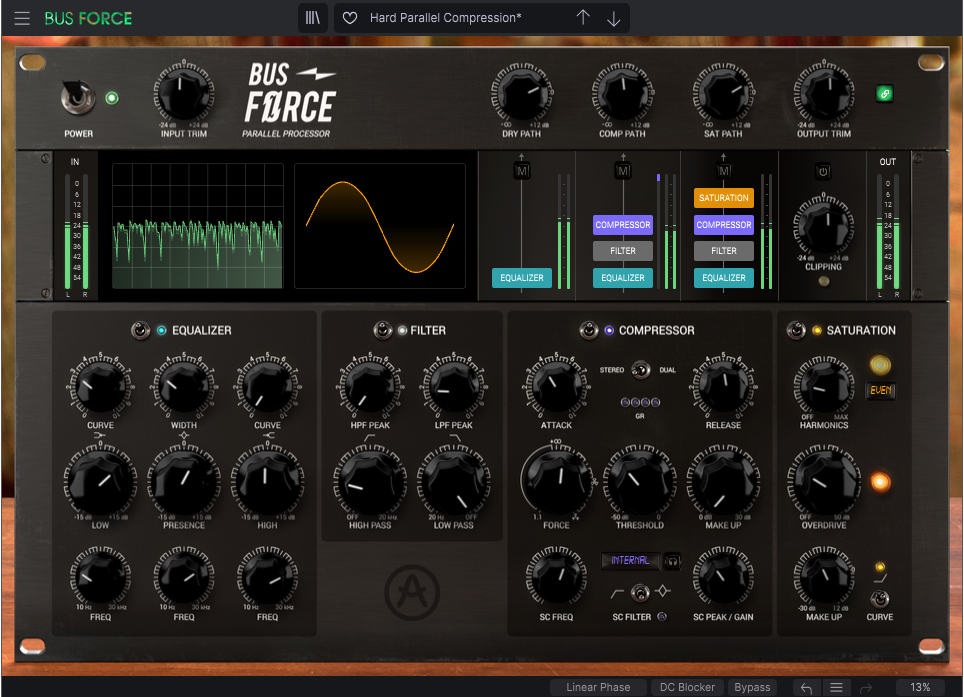
Let’s skip straight to the new “bus” effects. Now, given the name, yes you could throw these on a master bus. But before you squash your whole mix and anger your mastering engineer, there’s also some creative potential on individual channels and for creative destruction – if you’re the sort who likes to crank knobs to their extremes. (I’ve heard of such people. Me – never. I am a model of taste, restraint, and subtlety okay who am I kidding, yeah, I love demolishing things with the new Bus FORCE distortion stuff.)
Bus FORCE is to me the most interesting addition, and really justifies the whole upgrade (apart from that Germanium pre model). It’s not a model of a single effect, but a semi-modular multi-effect designed for filtering, EQ, and parallel compression.
The Filter module comes from their Oberheim SEM model.
The Compressor is their own VCA creation – gladly a more modern option, they say inspired by things like the Overstayer (see SOS review), and so capable of a lot of punch and destruction and a full range of time parameter adjustments. It also does sidechaining with source detection.
The equalizer is another Pulteq-inspired EQ – but that gets way more interesting when you can patch it into the multi-effect.
And the Saturation is a bunch of analog-sounding dirt and grime, with Even, Odd, Thick, and Overdrive modes. (Only missing are more digital distortion/saturation options, but you can always turn it off and chain that at the end with another plug-in.)
This is already pretty powerful, but where Arturia excel here is by giving you a load of routing options. There are separate Dry, Compressor, and Saturator paths, but then each lets you choose different routings, there’s a blend control, and you can toggle bypass for each module.
So there are other parallel compression options out there – I really like Baby Audio’s distinctive Parallel Aggressor, for a fixed-routing option. But they tend to give you a fairly narrow range of sound ideas, by design.
Bus FORCE is something that lets you do a whole lot of different kinds of shaping in a single module. At 99EUR, honestly, if you don’t plan to get the full package, I’d still go get Bus FORCE. (The full collection easily still has enough to sway you, but in case you already are in plug-in overload.)
Comp DIODE-609, EQ SITRAL-295
The other two banner additions are a little more conventional, but no less useful.
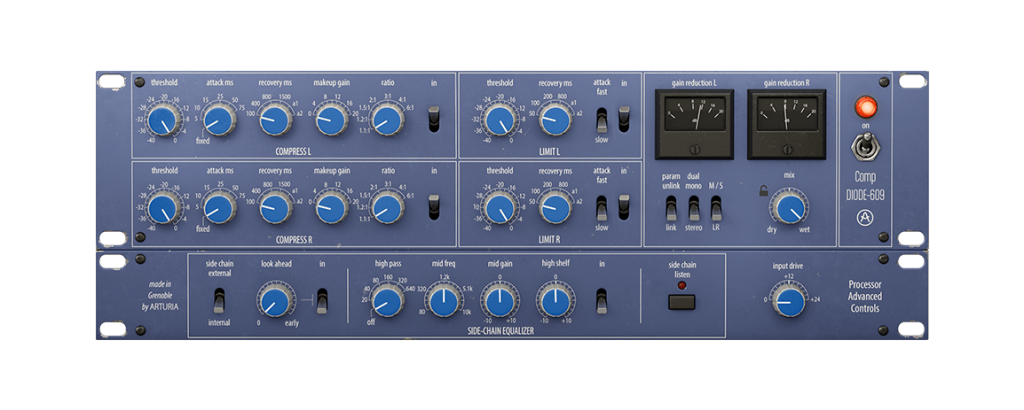
Comp DIODE-609 gives you a replica of the Neve 33609. It seems a solid recreation, and crucially adds mid-side processing and built-in sidechain EQ. That gives you some classic compression plus warm and crunchy limiting, and I can tell already I’ll probably use it more than the compressors previously in the package. Also useful – Mono>Stereo mode.
Adding advanced sidechain options, M/S processing, and a clever Input drive control that lets you calibrate how much character you want to add in the modeling make this a creative tool. And hey, it’s a lot cheaper than buying even recreated hardware.
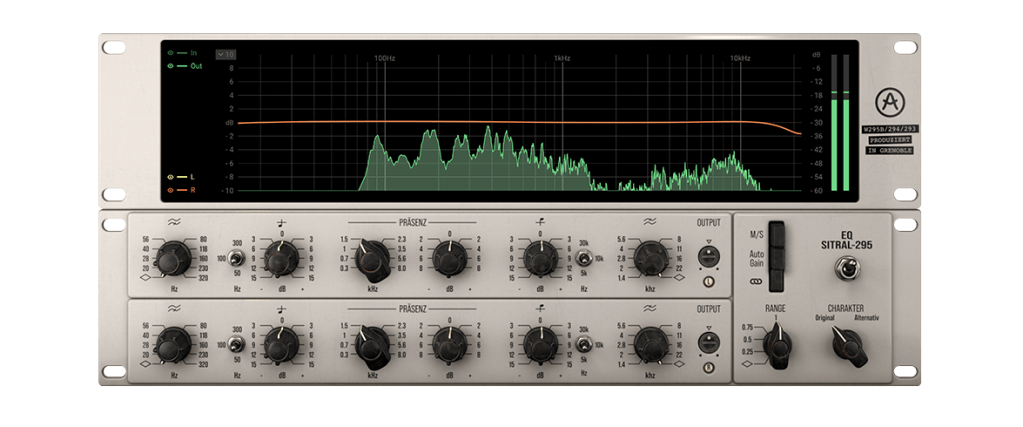
EQ SITRAL-295 is a model of the Siemens Sitral modules and – having just talked about Pulteq, the Siemens is a little more useful. Cleverly Arturia give you the option both to use notched settings (like the original hardware) and continuous controls (for more precision), plus more stereo options including mid/side processing.
And they again added an option of making it authentic or modern – with a Charakter switch in this case. There’s also a useful spectrum analyzer. It’s not hard to imagine making this a go-to EQ and character/presence/stereo field tool.
Everything else
There are just a lot of FX in this FX Collection. They must sound like hardware, because every time I send people sounds I made with them they think it was hardware. Ahem. I can just pose with a bunch of gear in the background.
Unlike the V Collection, though – and by virtue of these being effects tools rather than synths – there is an overall balance to how everything works together. So you get – with their original inspirations listed here (whether Arturia is allowed to do that or not):
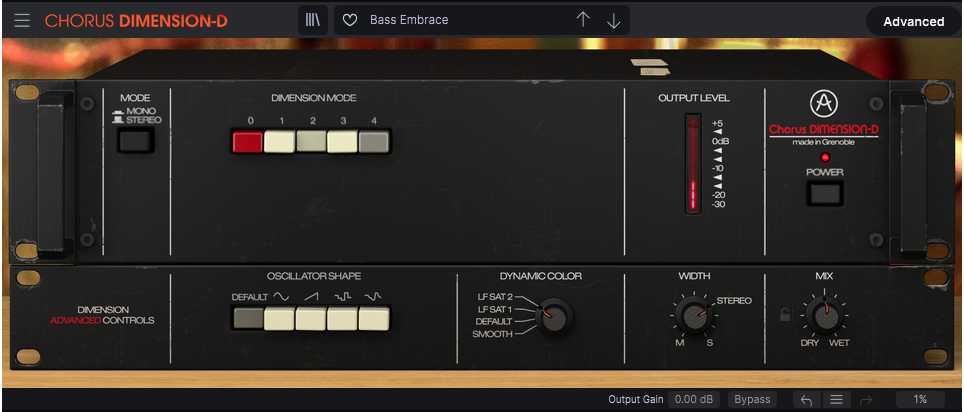
Modulation: stereo chorus (a Juno-6 chorus and a Roland Dimension-D chorus), dual phaser (based on Mu-tron Bi-Phase), and stereo flanger (based on Bel BF-20)
Compressor: solid-state VCA (DBA 165A), tube (Gates Sta-Level), and FET (based on UA’s 1176)
Delays: TAPE-201 (yep, an RE-201 Space Echo), memory-brigade delay (a la Electro-Harmonix), and Eternity (entirely new, derived from Arturia’s own Pigments)
Reverbs: plate (a la EMT), spring (Grampian Type 636) and Intensity
The emulations are all good stuff to have – you might even have some of them built into your DAW already. In each case, Arturia gives useful options, like different plate models on the plate reverb and tons of extras on the modulation tools.
But what is exciting to me about FX Collection 2 is, you get enough genuinely new stuff. Intensity is really an ideal software reverb, fully digital and computer-centric, with freeze, built-in chorus, soft clip, and a ton of modulation options (including an envelope follower and a custom function creator).
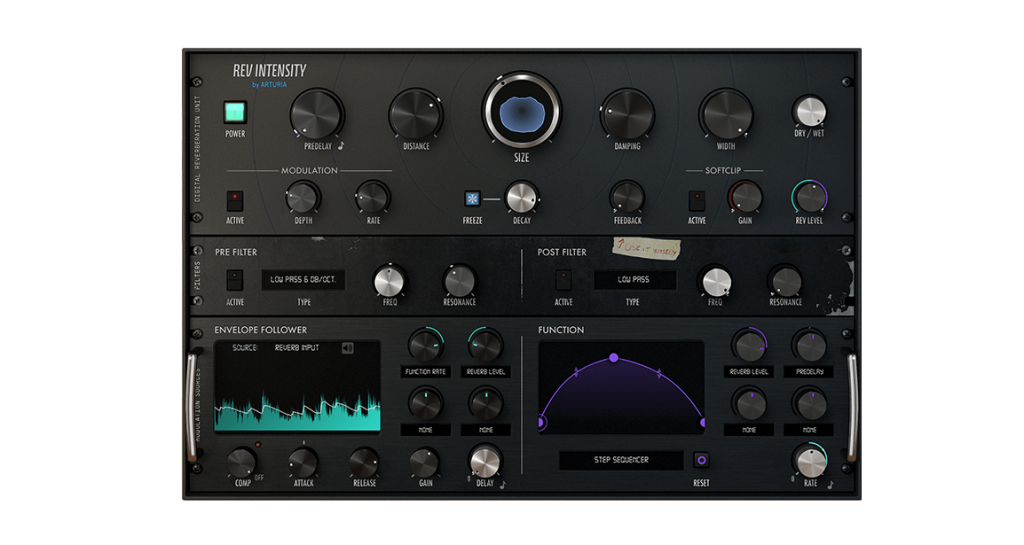
In some ways, actually, Intensity is the best evolution of the original reverb in Ableton Live – adding digital controls, modulation, and chorus – only brought twenty years forward. Also, much as I love convolution reverbs, they do have a nasty tendency to create weird resonance.
Ditto the excellent Eternity delay, which looks like a hardware emulation but was created from scratch.
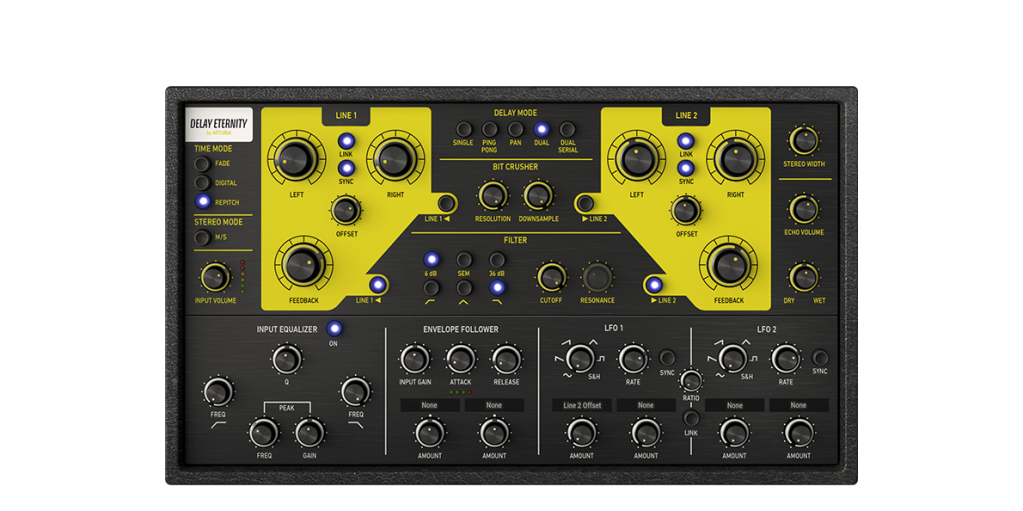
I do find Arturia’s effects are ones I come back to regularly, partly because they run on both Mac and PC and don’t require special hardware DSP support. (Some individual DAWs have great options of their own, too, but then it’s nice having this library when you bounce between them.)
It’s honestly almost even easier to recommend than V Collection, just in that you get so much of the analog-emulated effects stuff with modern quality-of-life features all in one go.
So look past just the analog emulations. The combination of Bus FORCE, Eternity, and Intensity – plus just enough retro emulation, and the eminently useful new bus tools – and you have a good balance of retro analog-ish sounds and new twists. It allows you to walk a line between retro and unexpectedly futuristic.
And that also makes this a decent window of where plug-in development is at now generally. So while it’s worth looking at FX Collection, I do also encourage mixing and matching with independent developers – especially once you have Arturia covering the retro essentials.
Compatibility and pricing
The full collection is 64-bit, VST 2.4 + VST3, AU, and AAX, Mac and Windows.
One major omission – there’s no native Apple Silicon support yet. That said, I ran the full suite on a Mac mini in Logic and … frankly, it blazed right through everything, so much so that I didn’t notice that I’d left behind a high-end, hot-as-heck Intel machine. All music devs I’ve talked to said they’re working on Apple Silicon native versions. Rosetta 2 works so well that we might as well wait on that so they do some optimization in the process. Stay tuned, though, I’ll keep an eye on that picture and how performance is impacted when developers do proper native translations. In the meantime, don’t worry, as I think the M1 is fast enough that you might not have noticed at all had I not mentioned it. Cough.
Through June 25, FX Collection 2 is $299/299€ (instead of $399/399€).
Crossgrades and discounts for existing customers start at $49/49€. As usual that’s too complex to track so let us know in comments how the deals look to you.
And happy, uh, effecting.